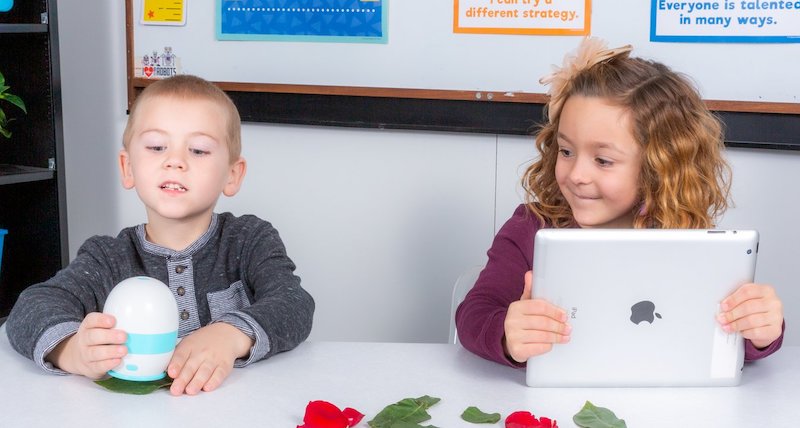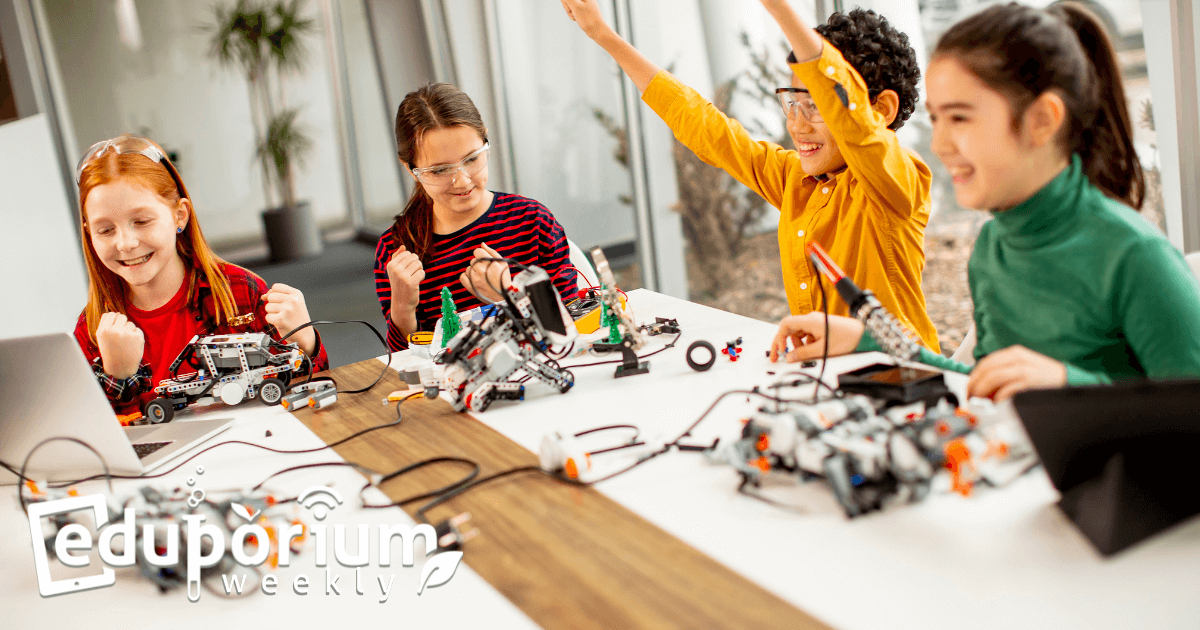You’ve probably heard a lot about the importance of learning to code or helping children develop optimal skill sets. While coding certainly is one aspect of STEM education that teachers focus on, it’s not, however, the only one. STEM experiences help children in many ways and teachers are always generating new ideas for improving them. And, one of the most popular options, of course, is creating enrichment programs. The core benefits of STEM learning are fantastic but they're often capped in K-12 classrooms, meaning more school leaders are encouraging their students to participate in STEAM outside of school, which is how the enrichment programs come into play.
Bringing Enrichment to STEM Education
Enrichment programs have been around for years but, these days, they’re a bit different from those more traditional offerings. Extracurricular activities have also been in schools forever, providing help for parents and helping kids beef up their resumés. Things like the chess club, drama club, and writing for the school newspaper are some historically popular extracurricular activities. These experiences help children bolster certain skills and help them feel like a part of a community. And, as extracurricular activities are evolving, many have more of a STEM focus. Educators have realized that STEM skills will serve students well in the future and want to capitalize on their desire to feel like part of the community, creating STEM enrichment programs, makerspace environments, or esports initiatives to help accomplish these goals.
Afterschool STEM programs for kids.
Enrichment programs help educators bridge the gap from the school day, week, or year ending. Of course, teachers don’t want their students forgetting what they learned, so they often turn to enrichment programs to reinforce classroom lessons with supplementary hands-on experiences. In STEM education, enrichment programs work like traditional enrichment programs—with educators using lessons or activities to focus on a particular STEM subject or concept. Using EdTech or maker tools, they can keep children exploring after school and even help them discover new passions. And, these meetings can happen as often or as little as you and your students like.
How STEM enrichment opportunities help students develop.
Of course, the ultimate goal with STEM enrichment programs is ensuring students learn new, relevant skills and other concepts. But, STEM enrichment programs also help them discover their individual interests and experience problem solving in different types of environments. Since educators can incorporate standards-aligned EdTech tools, STEM enrichment programs offer more ways to help prepare students for the future. So, while some might argue that enrichment programs mainly help prevent learning loss, they could also help extend learning gains. Also, with additional STEM experiences, creative problem solving may start to become second nature for students.

The Importance of Afterschool Enrichment
Besides the chance to collaborate with friends, experiment, or tinker, afterschool enrichment programs can be particularly important for some children. Every student learns differently and that's especially true in this day and age. So, while educators might use the same instructional methods day in and day out, they might be wasting their efforts if certain students don't learn well in new types of environments. But, afterschool or other enrichment programs allow students to try something new, which can make a huge difference. These programs typically allow students to move around and leave the everyday classroom routine behind, which could be very beneficial. And, like we said, this could be more than helpful for some K-12 students. It might sometimes be completely necessary.
Bringing STEM enrichment to afterschool programs.
This is a fine example of how these STEM enrichment programs could supplement student knowledge and academic experiences. Since each student absorbs and comprehends information differently, they may not always fully grasp everything the first time around. Having chances to revisit important material—especially while using hands-on tools after school—may truly make a difference. Of course, afterschool programs are especially beneficial for students who might be struggling to keep up with others or who, for one reason or another, show that they haven’t fully understood what teachers are discussing in class. For them, receiving individual instruction and positive feedback when they successfully work through a problem is crucial.
Feedback and collaboration in enrichment programs.
Afterschool enrichment programs also help children make real progress or catch up when necessary. When students make mistakes, however, that's also an opportunity to share constructive feedback—this can help children recognize when they slipped up and what they can do to continue to grow. At the same time, even if students aren’t struggling academically, maybe they are struggling socially and need a chance to interact more with their peers while working on assignments. Enrichment programs can really help children like this develop inquiry and collaboration skills in group work and reflection. Then, hopefully, they can harness the progress they make in afterschool environments and translate it to increasing their classroom success.
Different Types of Summer STEM Enrichment
We'll tend to think of summer as a chance for students and teachers to recharge. While every educator and everybody in the school system deserves the break, time away from their classroom doesn't always benefit students. We know how summer learning loss might affect them, and it sometimes takes up to a month for their brain to catch up upon returning from the long vacation. That’s partly why so many parents make sure their kids participate in some sort of enrichment program during these months. Though some parents need safe places to send kids, plenty of others might look for this kind of outlet anyway. Plus, with added hands-on problem solving practice, they're more likely to jump right back in when school resumes.
Looking for STEM enrichment in the community.
Many education officials have also created school-sponsored summer STEAM enrichment programs. Also, students could potentially benefit from being around the same teachers in summer programs that they had during the year. These teachers know what they've taught in the classroom and how to use STEM activities to build on what students know while also filling any gaps to prepare them for their next school year. There are tons of STEM camps that parents could look in to, but starting with school offerings could work, too. If not, as we said, there are often options within your community, including specialized camps and programs. These days, students may try a coding camp, for example, where they can develop relevant STEM skills. Others include those focused on STEM areas, like 3D printing, engineering, computers, or game design.
The many opportunities for enrichment.
In Massachusetts, for example, there's so many amazing STEAM organizations, including the Museum of Science and some prestigious STEM colleges. Many offer STEAM programs for children to help them learn through group projects or 1-on-1 instruction. Also, if there's a makerspace in your community, chances are this would be a nice option as well. As they try some various STEM activities, like inventing using low-tech items, collaborating, and even exploring robotics, students can learn about these areas and build key skills through collaboration with their peers. Enrichment programs—when the leaders can truly organize them as they do in the summer—can help students explore STEAM disciplines like physics, medical developments, engineering, and a whole lot more, enabling extensive learning opportunities.

STEM Enrichment in Early Childhood Education
We constantly talk about exposing children to STEM in the early grades, including in Pre-K, kindergarten, first, and second grade. So, it makes sense that, if they can participate in any STEM enrichment programs while in these grades (or during the summer), then that would make sense, too. Enrichment initiatives offer the same essential benefits for students no matter how young or old they are. They simply help them build on classroom experiences with hands-on projects to ensure they'll retain as much as possible. Enrichment experiences could also benefit students well before kindergarten, though educators must approach this in unique ways with age-appropriate activities.
Creating the right opportunities in early education.
Innovative thinking is important for career preparation and students won’t always get enough chances to practice it in the classroom. Especially for younger children who need to learn basic skills, like reading and spelling, there isn’t a lot of time left to explore technology and creative thinking. One problem with that is a lot of instructors simply accept this and never address it. One way to address it, however, is offering STEM enrichment programs, which don’t even have to be formal or complex. Using early education technology, educators can set aside just 30 or 45 minutes per week, once a month, or whenever to give all of their early elementary students the chance to learn skills they can carry over into other areas of their education.
STEM enrichment strategies for early learners.
The more practice children have with STEAM, the more they'll learn about innovation and problem solving. Believe it or not, there's actually quite a bit of STEM that's involved with various early childhood classroom activities. With early exposure to STEM, teachers can help kids boost their overall academic growth, which, as we mentioned, correlates with success in all phases of learning. These days, beneficial technologies are everywhere, so kids don't even have to use hands-on tech tools, specifically. There's plenty of educational apps that do more than introduce technology—incorporating STEAM topics and problem-solving methods. And, with extra practice, early learners can progress a bit more quickly and develop some worthwhile skills.
Enriching Overall Experiences with STEM
As we sometimes do, we’re taking this final section in a bit of an unexpected direction. So far, we’ve talked about using STEAM experiences as enrichment opportunities so students can keep their 21st century skills sharp while away from school or work on adding new ones to their tool belts. This is often the main goal as educators launch STEM enrichment programs but it's not the only way to enrich students' lives with STEM. There are many educators who'd argue that STEM connections belong in every classroom and subject. As such, when educators integrate STEM elements in their everyday curriculum, students often find beneficial opportunities to work on developing their STEM skills and mindsets more frequently.
Creating STEM enrichment experiences.
To teach STEM, teachers won’t necessarily need an end-to-end STEM curriculum with specific elements. Today, they can simply integrate new STEM tools, concepts, trends, and creative thinking in just about any environment. There are natural connections among many different STEAM concepts and highlighting them while teaching necessary standards can help prepare children for the future. Once teachers discover these connections, they could design their lessons to cover the requirements while also mixing in some possibly subtle STEM references throughout. By weaving STEM connections into lessons from secondary areas of the curriculum on a regular basis, students will, at the very least, discover new experiences and insights.
Creating a STEM curriculum without a formal STEM curriculum.
Teachers can utilize a multidisciplinary approach to incorporating STEM in other subjects by capitalizing on key themes that relate to STEM and the content they're discussing. They could also use an interdisciplinary approach and weave that same STEM topic into all their other classes. In this case, it doesn’t matter which subject children are studying because they could weave in various STEM points regardless. By integrating STEM throughout the curriculum, children can start to grasp the many connections today's world has to science, technology, engineering, and math. It could also perhaps help them answer that age-old question ‘Why do I need to know this?’ STEM is everywhere and, by purposefully sprinkling it in, instructors can do their part to equip students with the skills and mindsets to feel ready for whatever comes next.
For the latest EdTech, STEM, and 21st century education news, follow us on Twitter and Instagram. Like us on Facebook, too, or sign up for our newsletter for our latest product announcements and offerings. If you have an idea for an Eduporium Weekly theme, send us a message on social media or comment below.




1 Comment